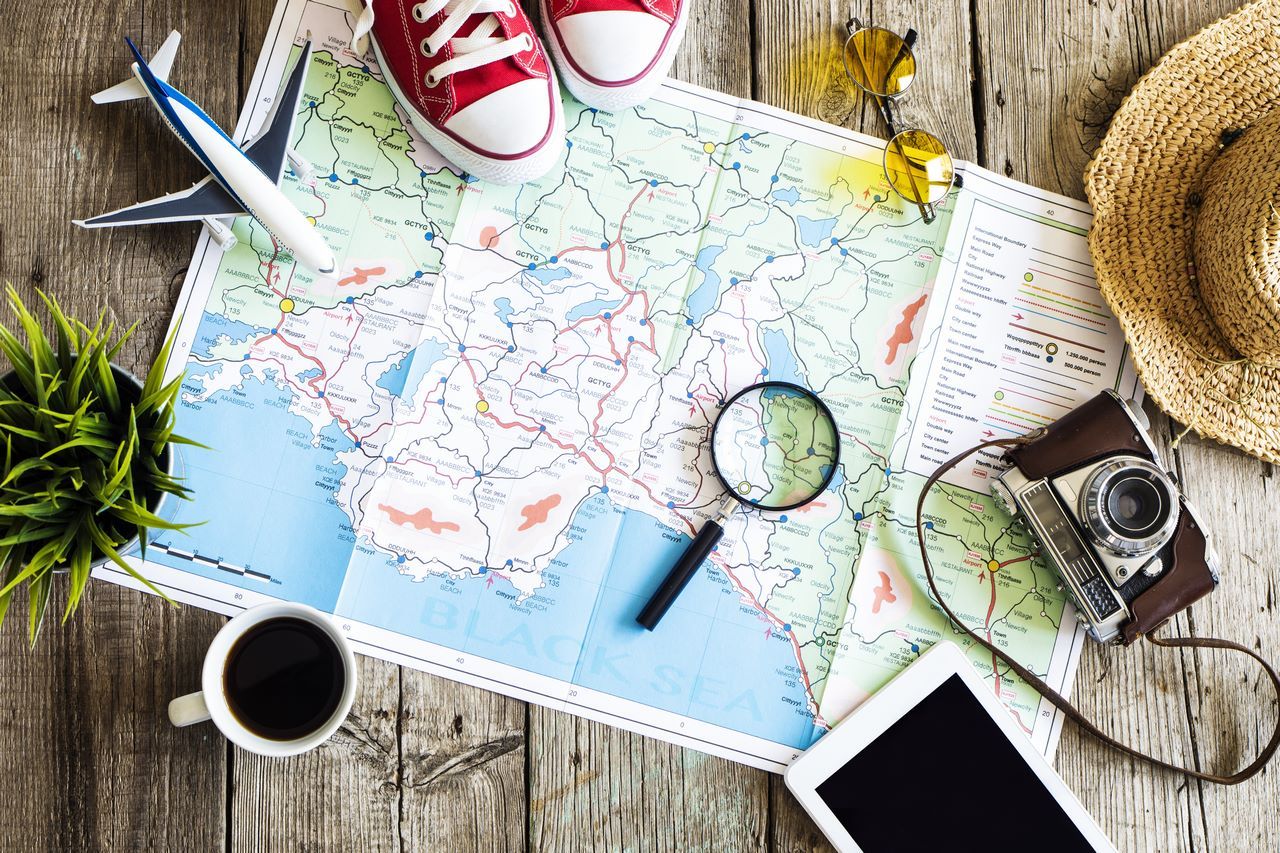Elder travel offers a unique opportunity for older adults to explore the world, create lasting memories, and enjoy well-deserved relaxation. This guide delves into the various aspects of planning and executing a fulfilling and safe journey, considering the specific needs and preferences of senior travelers. We will examine different travel styles, practical planning tips, health and safety considerations, accessible transportation options, suitable accommodations, budget management strategies, ideal destinations, and the role of technology in enhancing the overall travel experience.
From meticulously planned escorted tours to independent adventures, we explore diverse options to cater to various interests and physical capabilities. We’ll equip you with the knowledge to navigate the complexities of senior travel, ensuring a smooth, enjoyable, and memorable experience for every traveler.
Types of Elder Travel
Choosing the right type of travel is crucial for ensuring a safe, enjoyable, and fulfilling experience for older adults. Several factors, including physical capabilities, budget, and desired level of independence, should be considered when making this decision. This section will explore various options, highlighting their unique features and considerations.
Types of Elder Travel: A Comparison
Elderly travelers have a diverse range of options available to them, each catering to different preferences and needs. The following table summarizes the key aspects of several popular choices.
| Type | Description | Advantages | Disadvantages |
|---|---|---|---|
| Cruises | All-inclusive voyages offering various amenities, shore excursions, and onboard entertainment. | Easy to navigate, numerous activities, all-inclusive pricing, diverse destinations. | Can be crowded, potential for seasickness, limited independent exploration, higher cost. Accessibility features may vary greatly between cruise lines and ships. |
| Escorted Tours | Guided tours with pre-arranged itineraries, transportation, and accommodation, often including group activities and sightseeing. | Organized travel plans, reduced stress, opportunities for socialization, expert guidance. | Less flexibility, potentially rushed schedules, higher cost than independent travel, may not cater to individual preferences completely. Accessibility should be confirmed with the tour operator. |
| Adventure Travel | Travel focusing on outdoor activities and exploration, such as hiking, wildlife viewing, or cultural immersion. | Engaging and stimulating, opportunity for physical activity (within limits), unique experiences. | Demanding physically, potential safety risks, may require a higher level of fitness, may not be suitable for all older adults. Accessibility considerations are critical and should be carefully evaluated before booking. |
| Independent Travel | Self-planned travel allowing for complete autonomy and flexibility in itinerary and activities. | Maximum flexibility, personalized experience, potential cost savings. | Requires more planning and organization, potential for increased stress, may be challenging for those with limited mobility or health concerns. Thorough research on accessibility is essential. |
Physical Demands and Accessibility
The physical demands and accessibility considerations vary significantly across different travel types. For example, cruises generally offer good accessibility features, especially for those with mobility issues, but adventure travel often requires a higher level of physical fitness and may not be suitable for everyone. Escorted tours can be adapted to suit different needs, but it’s crucial to communicate any accessibility requirements upfront. Independent travel requires careful planning and consideration of accessibility at each stage, from transportation to accommodation and attractions. It’s vital to research specific destinations and services to ensure they meet individual needs. For instance, when considering an escorted tour, inquire about the availability of accessible transportation, accommodation, and excursion options. For independent travel, thoroughly investigate the accessibility features of hotels, attractions, and transportation in advance.
Health and Safety Considerations
Planning a trip is exciting, especially for older adults who may have been looking forward to it for a long time. However, it’s crucial to prioritize health and safety to ensure a smooth and enjoyable experience. This section addresses potential health risks, preventative measures, and resources available to support older travelers’ well-being.
Potential Health Risks and Preventative Measures
Older adults may be more susceptible to certain health issues while traveling, such as dehydration, falls, and exacerbations of pre-existing conditions. Proactive steps can significantly mitigate these risks.
Health Risks During Travel
Several factors inherent to travel can impact the health of older adults. Changes in altitude, climate, and diet can trigger health problems. Furthermore, the physical demands of travel, such as navigating airports and unfamiliar environments, can lead to fatigue and accidents. Long periods of inactivity during flights can also contribute to blood clots. Pre-existing conditions like heart disease, respiratory problems, or diabetes can be exacerbated by travel-related stress and changes in routine.
Medical Emergency Resources
Access to appropriate medical care is paramount during travel. Before departure, travelers should register with their country’s embassy or consulate in their destination. This provides a point of contact in case of emergencies. Additionally, carrying a comprehensive travel insurance policy that covers medical evacuation and repatriation is highly recommended. This insurance can alleviate significant financial burdens in the event of a medical emergency abroad. Knowing the location of the nearest hospital or clinic and having readily available contact information for local emergency services is also essential.
Managing Chronic Health Conditions While Traveling
For individuals managing chronic health conditions, careful planning is vital. This includes ensuring an adequate supply of medications, carrying a detailed medical history and a list of current medications, and consulting with their physician before departure. Packing medications in their original containers and carrying a copy of prescriptions can help avoid delays or complications at customs. It is also advisable to inform airline personnel about any specific needs or medical conditions to ensure appropriate assistance during the journey. Maintaining a consistent medication schedule, even while traveling, is crucial for preventing complications. Regular exercise, even simple stretches and walks, can help maintain physical fitness and overall health during the trip.
Transportation and Accessibility
Choosing the right mode of transportation is crucial for enjoyable and stress-free travel for older adults. Factors such as comfort, convenience, and accessibility must be carefully considered to ensure a positive travel experience. This section will compare various transportation options and detail how to arrange accessible travel arrangements.
Transportation Modes for Older Adults
Selecting appropriate transportation involves weighing the advantages and disadvantages of each option. The following table compares airplanes, trains, and buses, considering accessibility features.
| Mode | Advantages | Disadvantages | Accessibility Features |
|---|---|---|---|
| Airplane | Speed, wide range of destinations | Can be expensive, potentially stressful, limited legroom in economy | Wheelchair assistance, pre-boarding, accessible restrooms, in-flight assistance available upon request (contact airline in advance). Some airlines offer special assistance programs for elderly passengers. |
| Train | More spacious seating, scenic views, generally more relaxed atmosphere | Can be slower than air travel, fewer destinations served, potentially less frequent service on some routes. | Accessible restrooms, wheelchair ramps and lifts, designated wheelchair spaces, assistance available from train staff (contact the train company in advance). Many train companies offer assistance programs. |
| Bus | Generally affordable, covers a wide range of areas, often more frequent service than trains | Can be less comfortable for long journeys, potentially crowded, limited legroom | Wheelchair lifts or ramps, designated wheelchair spaces, accessible restrooms (availability varies depending on bus company and type of bus). It is essential to contact the bus company well in advance to confirm accessibility features and arrange assistance. |
Accessibility Features at Travel Destinations
Many travel destinations offer various accessibility features to cater to the needs of older adults and individuals with disabilities. These features can include:
* Accessible Hotel Rooms: Many hotels offer rooms with wider doorways, roll-in showers, grab bars, and adjustable beds. Booking directly with the hotel or using specialized travel agencies that cater to accessible travel is recommended to ensure these features are available.
* Accessible Transportation within Destinations: Many cities and tourist areas provide accessible transportation options, such as wheelchair-accessible taxis, ride-sharing services with wheelchair-accessible vehicles, and accessible public transportation systems (buses, trams, subways). Researching these options before travel is crucial.
* Accessible Attractions and Activities: Many popular tourist attractions, museums, and national parks are equipped with ramps, elevators, accessible restrooms, and other features to make them accessible to visitors with disabilities. Checking the websites of these attractions beforehand is advisable.
* Assistive Devices: Some destinations offer rental services for mobility aids such as wheelchairs, walkers, and other assistive devices.
Arranging Accessible Transportation in Advance
Securing accessible transportation requires advance planning. For air travel, contact the airline directly to request wheelchair assistance, pre-boarding, and any other necessary accommodations. Provide details about your specific needs and mobility requirements. For train travel, contact the train company to reserve accessible seating and arrange any necessary assistance. For bus travel, contact the bus company to confirm the availability of accessibility features and arrange for assistance if needed. For ground transportation at your destination, research accessible taxi services or ride-sharing options, or consider booking private accessible transportation in advance. Providing ample notice is key to ensuring the necessary arrangements are made.
Accommodation Options
Choosing the right accommodation is crucial for a comfortable and enjoyable elder travel experience. The right lodging can significantly impact an older adult’s mobility, comfort, and overall well-being during their trip. Consider factors beyond just price and location to ensure a positive and safe stay.
A wide variety of accommodation options cater specifically to the needs of older travelers. These options prioritize accessibility, safety, and comfort, allowing seniors to relax and enjoy their trip without unnecessary stress. Careful consideration of features such as bathroom accessibility and the availability of assistance can make a significant difference.
Senior-Friendly Hotels and Resorts
Many hotels and resorts now offer specifically designed amenities and services for older adults. These accommodations often include features that enhance safety and comfort, promoting a more relaxing and enjoyable travel experience.
Features that make accommodations suitable for elderly travelers often include:
- Accessible bathrooms with roll-in showers, grab bars, and raised toilet seats.
- Wider doorways and hallways to accommodate wheelchairs or walkers.
- Grab bars strategically placed in bathrooms and bedrooms.
- Emergency call buttons in bathrooms and bedrooms.
- Well-lit rooms and hallways to minimize tripping hazards.
- Easy-to-reach light switches and electrical outlets.
- Availability of adaptive equipment upon request (e.g., wheelchairs, walkers).
- On-site medical assistance or partnerships with nearby medical facilities.
- Ground-floor rooms to avoid stairs.
- Restaurant options with accessible seating and menus.
Vacation Rentals Adapted for Seniors
Vacation rentals, such as apartments or houses, can offer more space and flexibility than hotels. Many rental platforms now allow filtering for accessibility features, making it easier to find suitable options.
Examples of features often found in senior-friendly vacation rentals include:
- Ramps or elevators for easier access.
- Open floor plans to minimize navigating tight spaces.
- Single-story homes to avoid stairs.
- Accessible kitchen facilities.
- Sufficient space for mobility aids.
Comparison of Accommodation Types
| Type | Amenities | Price Range | Accessibility Features |
|---|---|---|---|
| Senior-Friendly Hotel | Restaurant, pool, fitness center, concierge services, daily housekeeping | $$$ – $$$$ | Accessible rooms, grab bars, roll-in showers, emergency call buttons |
| Senior-Friendly Resort | Multiple restaurants, spa, various activities, transportation services, larger rooms | $$$$ – $$$$$$ | Accessible rooms, ramps, elevators, adapted recreational facilities |
| Adapted Vacation Rental | Full kitchen, laundry facilities, more space, often pet-friendly | $$ – $$$$ | Ramps, elevators (if multi-story), wider doorways, grab bars (depending on property) |
| Assisted Living Facility (for longer stays) | 24/7 care, meals, social activities, medical assistance | $$$$$ – $$$$$$$ | Fully accessible rooms, personalized care plans, medical monitoring |
Budget and Cost Considerations
Planning a trip, especially for seniors, requires careful consideration of expenses. Understanding and managing your budget is crucial for a stress-free and enjoyable travel experience. This section will explore strategies for saving money and accessing financial assistance to make elder travel more affordable.
Elderly travelers often have specific financial needs and limitations. Therefore, developing a realistic budget and seeking out cost-effective options are essential steps in the planning process. This involves identifying potential expenses, exploring discounts and financial aid programs, and making informed choices about travel arrangements.
Budgeting Strategies for Senior Travelers
Effective budgeting begins with a detailed breakdown of expected costs. This includes airfare, accommodation, activities, meals, transportation within the destination, travel insurance, and incidentals. Consider using a spreadsheet or budgeting app to track expenses and ensure you stay within your allocated budget. Prioritizing essential expenses and identifying areas where you can cut back is key. For example, choosing budget-friendly accommodation options or opting for free activities over expensive tours can significantly reduce costs. Booking flights and accommodations well in advance can also often secure lower prices.
Cost-Effective Travel Options for Seniors
Several options exist to make travel more affordable for seniors. Consider traveling during the off-season or shoulder seasons to avoid peak pricing. This often means experiencing fewer crowds and potentially better deals on flights and accommodation. Choosing destinations with lower costs of living can also significantly reduce overall expenses. For example, exploring Eastern European countries or certain regions of Southeast Asia can offer a rich cultural experience at a fraction of the cost of popular Western destinations. Utilizing package deals, which often bundle flights, accommodation, and sometimes even activities, can also lead to significant savings. Finally, opting for simpler accommodations, such as guesthouses or bed and breakfasts, instead of luxury hotels, can dramatically lower lodging costs.
Financial Assistance Programs and Travel Discounts for Seniors
Numerous programs and discounts cater specifically to older adults. Many airlines and travel agencies offer senior discounts on flights and package tours. Organizations like AARP (American Association of Retired Persons) often provide exclusive travel deals and resources for their members. Additionally, some government programs might offer financial assistance for travel expenses, particularly for those with limited incomes or specific health needs. It’s crucial to research available programs and discounts specific to your location and circumstances. Contacting local senior centers or social services agencies can provide valuable information about available resources. Furthermore, exploring options such as travel insurance specifically designed for seniors can offer protection against unexpected medical expenses or trip cancellations.
Last Word
Ultimately, successful elder travel hinges on meticulous planning, careful consideration of individual needs, and a proactive approach to safety and well-being. By understanding the various options available, from accessible transportation and suitable accommodations to managing health concerns and leveraging technology, older adults can embark on enriching adventures with confidence and peace of mind. The key is to tailor the experience to individual capabilities and preferences, ensuring a journey filled with joy, discovery, and lasting memories.




